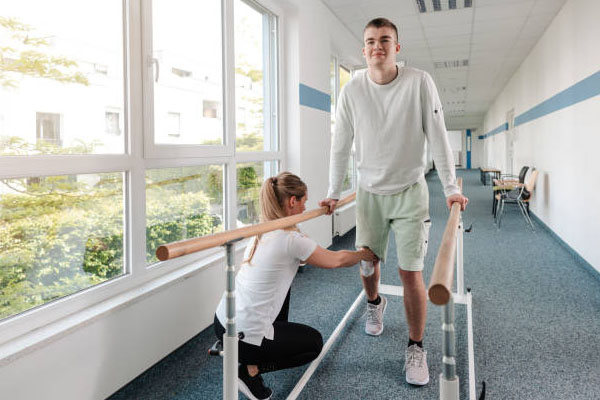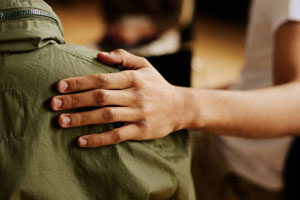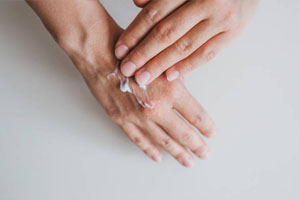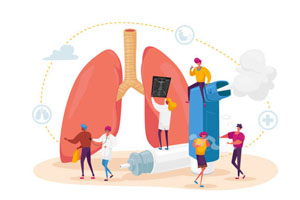Discover the most effective strategies for injury rehabilitation in sports From personalized plans to prevention tips, learn how to recover and regain peak performance
Injury rehabilitation is a critical phase in the journey of athletes and sports enthusiasts. Whether you're recovering from a sprained ankle, torn ligament, or any other sports-related injury, the rehabilitation process is essential for a successful return to your favorite activities. But what are the best strategies to ensure a smooth and effective rehabilitation? In this guide, we'll explore the key techniques and principles that can help you regain your strength, mobility, and performance following an injury.
From understanding the common types of sports injuries to delving into personalized rehabilitation plans, physical therapy, nutrition, and even psychological support, we'll cover a wide range of topics that are integral to the recovery process. Additionally, we'll discuss ways to prevent future injuries and share real-world success stories of athletes who've triumphed over adversity.
Whether you're a professional athlete or someone who enjoys sports as a hobby, this guide will provide valuable insights into injury rehabilitation strategies that can make a difference in your life. Let's embark on this journey to recovery and discover the best practices for rehabilitation in sports.

Understanding Sports-Related Injuries
Common Types of Sports Injuries
Sports injuries can vary widely, but some are more common than others. Understanding these common types of injuries is crucial for effective rehabilitation:
- Strains and Sprains: These injuries involve overstretching or tearing of muscles or ligaments and can affect any part of the body.
- Fractures: Broken bones are a frequent occurrence in contact sports or those that involve impact.
- Tendonitis: Inflammation of the tendons often results from repetitive motions in sports.
- Dislocations: Joint dislocations can happen when bones are forced out of their normal positions.
- Concussions: Head injuries can lead to concussions, especially in high-impact sports.
Each injury type requires a different approach to rehabilitation, which is why proper diagnosis is essential.
The Rehabilitation Process
Rehabilitation after a sports injury is a structured process designed to help athletes regain their pre-injury level of fitness and performance. It typically involves several key phases:
- Assessment and Diagnosis: A thorough examination by a healthcare professional to understand the extent of the injury.
- Initial Treatment: Immediate care, such as R.I.C.E. (Rest, Ice, Compression, Elevation) for many injuries.
- Customized Rehabilitation Plan: Tailoring a plan to the individual's injury, goals, and needs.
- Physical Therapy: Targeted exercises and therapies to rebuild strength, flexibility, and mobility.
- Nutrition and Recovery: Proper nutrition and rest are vital for healing.
- Psychological Support: Coping with the mental and emotional aspects of recovery.
- Gradual Return to Sports: Ensuring athletes are ready to resume activities safely.
Successful rehabilitation is about more than just physical healing. It requires a holistic approach to recovery and a commitment to the process.
Key Strategies for Injury Rehabilitation
Early Assessment and Diagnosis
Early and accurate assessment and diagnosis are the cornerstones of effective injury rehabilitation:
- Professional Evaluation: Seek immediate evaluation from a healthcare professional to determine the exact nature and severity of the injury.
- Diagnostic Tests: In some cases, diagnostic imaging such as X-rays, MRIs, or CT scans may be necessary for a more detailed assessment.
- Precise Diagnosis: An accurate diagnosis ensures that the rehabilitation plan is tailored to the specific injury, reducing the risk of complications.
Customized Rehabilitation Plans
Every injury is unique, and rehabilitation plans should reflect this individuality:
- Personalized Approach: Work with a healthcare professional to create a rehabilitation plan that considers the athlete's goals, needs, and the nature of the injury.
- Progressive Goals: Break the rehabilitation process into achievable milestones, allowing for a sense of accomplishment along the way.
- Adjustments as Needed: The plan should be flexible, with adjustments made based on the athlete's progress and any unexpected challenges.
Physical Therapy and Rehabilitation Exercises
Physical therapy and exercises play a central role in the rehabilitation process:
- Targeted Exercises: Physical therapists design exercise routines to rebuild strength, flexibility, and function in the injured area.
- Consistent Workouts: Athletes need to commit to their exercise programs and complete their exercises regularly to see progress.
- Professional Guidance: Working with experienced physical therapists ensures that exercises are safe, effective, and tailored to the specific injury.
Nutrition and Recovery
Nutrition and rest are essential elements of injury recovery:
- Balanced Diet: Eating the right foods can aid in the healing process and reduce inflammation. Consult a nutritionist if necessary.
- Adequate Rest: Proper sleep and relaxation are crucial for recovery and allow the body to repair itself.
- Hydration: Staying well-hydrated is essential for overall health and can support the body's healing processes.
Psychological Support and Motivation
Maintaining a positive mindset and emotional well-being is just as important as physical healing:
- Psychological Counseling: Professional support can help athletes cope with the mental and emotional challenges of injury and recovery.
- Visualization and Goal Setting: Setting realistic goals and visualizing successful recovery can enhance motivation.
- Supportive Network: Having a support system of family, friends, and teammates can provide motivation and encouragement.
Preventing Future Injuries
Proper Training Techniques
Employing correct training techniques is essential for minimizing the risk of future injuries:
- Professional Guidance: Seek guidance from experienced trainers or coaches to ensure your training methods align with best practices.
- Progressive Overload: Gradually increase the intensity and volume of your workouts, avoiding sudden, excessive loads on your body.
- Proper Form: Emphasize good form in all exercises to reduce the strain on joints and muscles.
Equipment and Gear Maintenance
Maintaining your equipment and gear is crucial for preventing accidents and injuries:
- Regular Inspections: Routinely check your sports equipment, ensuring that it is in good condition and free from defects.
- Replace Worn Gear: Discard and replace any damaged or worn-out equipment promptly to prevent accidents.
- Proper Fit: Ensure that your gear fits correctly and is adjusted to your body's specifications to reduce the risk of injury.
Gradual Return to Sports
Returning to your sport gradually and safely is essential to avoid re-injury:
- Consult a Professional: Seek guidance from a healthcare provider or physical therapist to develop a structured return plan.
- Monitor Progress: Pay attention to your body's response during each phase of your return, adjusting your activities accordingly.
- Listen to Your Body: If you experience pain or discomfort, do not push through it; instead, address the issue and modify your plan as needed.
Real-World Success Stories
Inspiring Recovery Journeys
Real-world success stories provide inspiration and insight into the possibilities of injury rehabilitation. Here are some remarkable journeys:
1. Overcoming a Severe ACL Tear
This story highlights an athlete who faced a severe ACL tear but made a triumphant comeback through comprehensive rehabilitation. It emphasizes the importance of personalized rehabilitation plans and dedication to the recovery process.
2. Return to Competitive Running
Anecdotes of runners who successfully rehabilitated after lower limb injuries, like stress fractures and shin splints. They share how a combination of physical therapy, proper training techniques, and gradual return to running helped them reclaim their competitive edge.
3. Professional Athlete's Resilience
Learn about a professional athlete's story of overcoming a career-threatening injury. This tale underscores the role of psychological support, motivation, and maintaining a positive mindset throughout the rehabilitation journey.
Transformative Strategies in Action
These real-world success stories showcase how key strategies have been put into action:
1. Returning to a Contact Sport
A tale of an athlete returning to a contact sport after rehabilitating from a shoulder injury. The story exemplifies the significance of proper training techniques, physical therapy, and the gradual reintroduction to the sport.
2. Prevention in Practice
Discover how an athlete maintained injury prevention through equipment and gear maintenance. This story emphasizes the value of regularly inspecting sports equipment and ensuring a proper fit.
3. Overcoming Multiple Injuries
An account of an athlete's journey to overcome multiple sports-related injuries. This story underscores the importance of listening to one's body, seeking professional guidance, and setting milestones during the rehabilitation process.
FAQs about Injury Rehabilitation in Sports
Q1: How long does the injury rehabilitation process typically take?
A: The duration of injury rehabilitation can vary significantly depending on the type and severity of the injury. In some cases, it may take a few weeks, while more complex injuries might require several months of dedicated rehabilitation. Your healthcare professional will provide a personalized estimate based on your condition.
Q2: What role does physical therapy play in injury rehabilitation?
A: Physical therapy is a fundamental component of injury rehabilitation. It involves exercises and treatments aimed at improving mobility, strength, and function after an injury. A skilled physical therapist guides patients through exercises and monitors progress, helping them regain optimal physical condition.
Q3: Are there strategies to reduce the risk of future injuries after rehabilitation?
A: Yes, there are several strategies to reduce the risk of future injuries. This includes proper training techniques, equipment maintenance, gradual return to sports, and listening to your body. Consult with a sports medicine professional to create a plan for minimizing the risk of reinjury.
Q4: Can psychological support help with injury rehabilitation?
A: Absolutely, psychological support plays a significant role in injury rehabilitation. It can help athletes stay motivated and maintain a positive mindset throughout the recovery process. Support from mental health professionals, coaches, and peers can make a considerable difference in an athlete's journey.
Q5: Should I continue strength training during injury rehabilitation?
A: In many cases, yes. Your healthcare professional or physical therapist can guide you on safe strength training exercises that won't worsen your injury. Maintaining strength in non-affected areas can be beneficial and may help your overall recovery.








